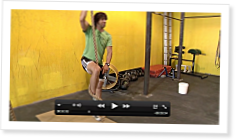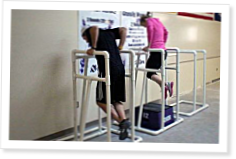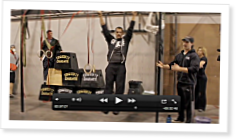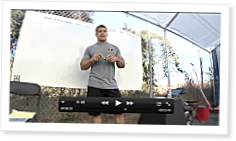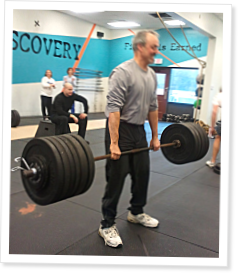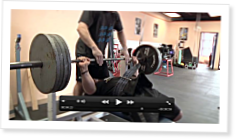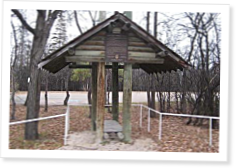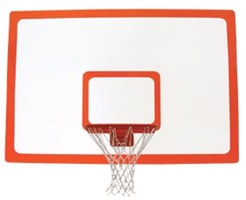
• DAN McCARNEY (North Texas).
Where you've seen him before: After five seasons of futility, McCarney finally broke through with five winning seasons in six years at Iowa State, including the Cyclones' second ever finish in the final AP poll (No. 25 with a 9-3 record in 2000). He was somewhat hastily fired after a regression to 2-10 in 2006, eventually landing on his feet on Urban Meyer's staff at Florida for the last three years.
Replacing: Todd Dodge, who was unable to convert his prolific spread offense from local high school powerhouse Southlake Carroll into wins at North Texas: Barely removed from a four-year winning streak in Sun Belt games under coach Darrell Dickey, UNT won all of six games in three-and-a-half years before ditching Dodge last October.
Best resumé line: McCarney has a BCS championship ring from his time in Gainesville, but even that pales next to guiding Iowa State into the top 10 for the first and only time in school history in 2002, however briefly.
Biggest drawback: It took McCarney five years to drag Iowa State's carcass out of the crater he found it in and nurse it back to life, and the two relapses after the Cyclones' turn toward respectability – to 2-10 in 2003 and 4-8 in 2006, the season that got him fired – were spectacular fireballs.
Longevity: At 57 (he'll be 58 by the start of the season), McCarney doesn't have a five-year buffer to get this project off the ground. At that point, he'd probably like to be in position to hand off a viable SBC contender with a more solid foundation; if not, he'll probably be out, anyway.
Grade: B+. McCarney's not a big name and certainly doesn't bring a gaudy record (56-95) from his days at ISU. But he's exactly what North Texas needs after its failed experiment with Dodge: A salt-of-the-earth veteran with 35 years of experience in the Big Ten, Big 8/12 and SEC and respectable record as a college head coach. In terms of wins and losses, UNT may be a better opportunity than Iowa State – as bad as the Mean Green have been since their last conference championship in 2004, at least that track record exists.
 • RANDY EDSALL (Maryland).
• RANDY EDSALL (Maryland).
Where you've seen him before: At UConn, where he spent a decade taking UConn from obscurity in the I-AA/FCS ranks to consistent success in the Big East and finally to the big stage in the Fiesta Bowl on Jan. 1, as Big East champion. Edsall doesn't quite fit with today's "retread" theme, but he is a veteran, and he's also the only head coach to leave his job this offseason for essentially a lateral move, rather than a clear step up.
Replacing: Ralph Friedgen, who gave a solid decade to his alma mater before being summarily discarded in December by first-year athletic director Kevin Anderson.
Best resumé line: Question its credentials and circuitous path if you must, but the fact remains: UConn played in the Fiesta Bowl barely a decade removed from finishing sixth in the Atlantic 10 in Edsall's first season.
Biggest drawback: Well, he isn't Mike Leach. In fact, Edsall is more like a younger version of Friedgen: Another no-frills, run-first, defense-and-special teams guy in a conference already dominated by Frank Beamer, Jimbo Fisher, Tom O'Brien, Butch Davis, Frank Spaziani, et al. For a program allegedly looking to spark dwindling interest and attendance, it's a steady-as-she-goes hire; at least Leach – who was reportedly one step shy of measuring Friedgen's office for pirate drapes before Christmas – would have been a wild card, which is only one of the reasons he would have immediately energized the apathetic fan base with the promise of the most wide-open offense the ACC has ever seen. Edsall is a safer choice, in that he promises the program probably isn't headed for an utter collapse on the order of the 2-10 debacle of 2009. How do you build a marketing campaign around the guy with the "high floor"?
Longevity: For starters, he's only 52, one year younger than Friedgen when he was hired in 2001, and calls Maryland his "dream job." As long as the record's respectable, he'll be entrenched for the foreseeable future.
Grade: B. Edsall's not exciting; fans aren't going to start flocking in droves for 8-4 runs to the Champs Sports Bowl. But if he gives Maryland the decade Friedgen did – that is, six eight-win seasons, seven bowl games and rare conference championship – this is a good hire.
• ROCKY LONG (San Diego State).
Where you've seen him before: Long, a former All-WAC quarterback at New Mexico in 1971, spent 11 years as head coach at his alma mater from 1998-2008, arguably the best decade in school history: The Lobos turned in five winning records in Long's final seven seasons, before he abruptly resigned – to the surprise and chagrin of school officials – in the wake of "a terrible job" by he and his staff in 2008. "I want this program to be on top," Long said then. "I don't see that happening with me as the head coach."
Replacing: Brady Hoke, who brought the Aztecs out of a decade of futility with nine wins in his second season – as many as they'd won in three years under Hoke's predecessor, Chuck Long – before setting off for his dream job at Michigan. Long was promoted from defensive coordinator.
Best resumé line: Long left New Mexico as the schools all-time winningest coach, and took UNM to as many bowl games on his watch (five) as the program had earned in its first 70 years combined.
Biggest drawback: He also left New Mexico with a losing overall record (65-69), zero conference championships, only one bowl win in five tries and as many losing seasons as winning.
Longevity: Long just turned 61, giving him anywhere from five to 15 years left in the tank, if he doesn't fire himself first.
Grade: B. San Diego State didn't have a lot of options after Hoke left in mid-January, taking offensive coordinator Al Borges with him to Ann Arbor. They didn't get a headliner in his place, but they did get a veteran who's built and maintained a consistent winner in the Mountain West with less resources that he has at his disposal at SDSU.
• PAUL PASQUALONI (Connecticut).
Where you've seen him before: Pasqualoni's resumé over 15 years at Syracuse included seven top-25 finishes, at least a share of four Big East championships and only one losing season, in 2002. Three years of stagnation got him fired in '04, but honestly, after four years of successor Greg "Gerg" Robinson, stagnation never looked like such an accomplishment. Pasqualoni returns to the college ranks after six years with the Miami Dolphins and Dallas Cowboys.
Replacing: Edsall, who essentially built the current UConn program from the ground up.
Best resumé line: The Orangemen combined to go 20-4 with a Big East championship in Pasqualoni's first two seasons in 1991-92, both ending with Jan. 1 bowl wins. Going back to his first job, at Division II Western Connecticut, his career winning percentage as a head coach is just shy of 65 percent.
Biggest drawback: It's never a good sign when your hiring prompts the program's most influential donor to call the athletic director "unqualified" and demand his money back – especially when you coached one of said donor's sons in a previous gig. Clearly, Pasqualoni isn't arriving as a unifying figure.
Longevity: At 61, Pasqualoni seems like a "maintenance" hire – a stopgap to keep the bottom from falling out of the rapid success under Edsall for four or five years.
Grade: C+. Statistically, 60-year-old head coaches are almost always well past their prime, especially if they haven't spent at least a decade building a program into an undisputed national power, a la Bear Bryant, Bobby Bowden and Joe Paterno, the only coaches ever to win a national championship past their 60th birthday. UConn isn't competing for national championships, but on the heels of its first Big East title, it will be a tall order for Pasqualoni to leave the program in better shape than he found it.
- - -
Matt Hinton is on Twitter: Follow him @DrSaturday.
Giuliana DePandi Pamela Anderson Amber Arbucci Christina Aguilera Kate Hudson
 Last week, Rich Rodriguez told the Associated Press he
Last week, Rich Rodriguez told the Associated Press he  At 7-3, there's room to claim progress, even if the last three wins in that record happen o be harrowing, skin-of-the-teeth triumphs over three of the most hapless teams in the conference. (In this case,
At 7-3, there's room to claim progress, even if the last three wins in that record happen o be harrowing, skin-of-the-teeth triumphs over three of the most hapless teams in the conference. (In this case, 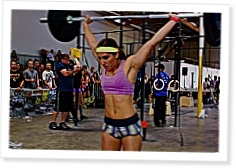
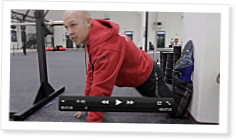
 About this time last week, longtime
About this time last week, longtime  b) The opposition got out. Armed with the news – and from a USC outlet, no less – Bruin fans and boosters went on the offensive over the next 24 hours, most notably from the most reliably earnest fan site on the web, Bruins Nation, which immediately labeled Seto
b) The opposition got out. Armed with the news – and from a USC outlet, no less – Bruin fans and boosters went on the offensive over the next 24 hours, most notably from the most reliably earnest fan site on the web, Bruins Nation, which immediately labeled Seto 